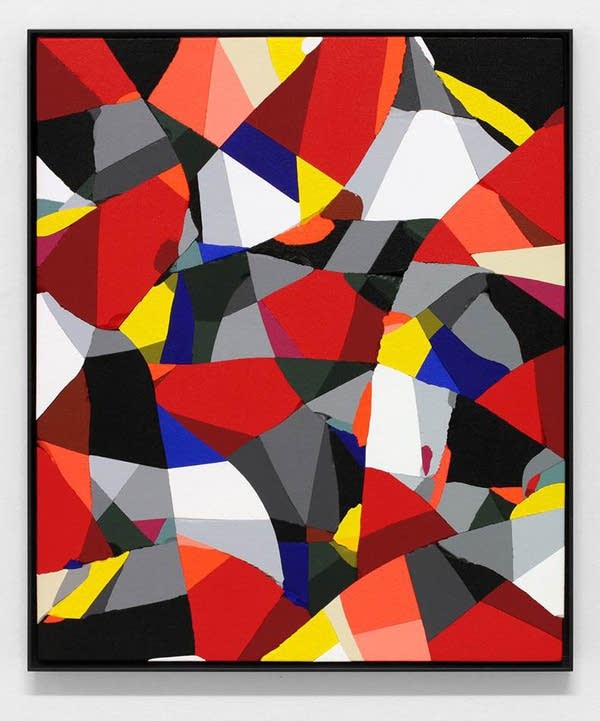An artist who works in fragments as well as pigments

Ruben Nusz loves color. It's obvious as soon as you walk into the Weinstein Gallery in Minneapolis. His works are filled with saturated reds, blues, greens and yellows that pop off the white walls.
But Nusz is also a fan of "trompe l'oeil" — fooling the eye — and often his works are not what they might first seem.
These latest pieces are sculptures as much as they are paintings. If you get up close to the painting, you'll see that where the colors meet, there are cracks. And chips.
"Instead of starting with a blank canvas, I started with a plaster canvas copy that I then broke and painted and then cut up apart and painted again and then glued it back together," he explained. "And so you end up with a painting that is sort of made backwards."
Create a More Connected Minnesota
MPR News is your trusted resource for the news you need. With your support, MPR News brings accessible, courageous journalism and authentic conversation to everyone - free of paywalls and barriers. Your gift makes a difference.
While a canvas painting is relatively light, these plaster casts weigh upwards of 20 pounds. But the bright colors and dynamic patterns give the images a lightness that belies their real heft.
Similarly, their initially playful and engaging nature is just the first layer in Nusz's very serious investigation into color and perception. The title of his show is "B.C.," which stands for "Broken Chroma." Chroma refers to the purity or intensity of a color. Nusz has studied color theory for years, but admits with a laugh:
"I know nothing about color. I know nothing."
That's because colors are tricky things. How we perceive a color can change drastically depending on the lighting, or the colors it's next to, or even our mood. Color is inextricably tied up in our own perception. Which is why Nusz loves to play with trompe l'oeil.
"You can make something that is not real seem real, and you can make something that is real seem not real," he said. "And that conflation of truth and fiction is really interesting to artists."
His paintings make viewers question their own perceptions. Where is the edge of this painting? Is this a painting? Or is it a three-dimensional object? Am I seeing shadows cast by something in the room, or is that just a different color on the canvas?

"We often think that we're standing in a spot and looking at this one painting," he said. "But for me, paintings become more interesting when they are dynamic, when you can move into a painting and have a different relationship than you do from a distance."
Nusz is strikingly well-versed in art history, and keenly aware of his place in it. By painting on plaster, he's making reference to the rich history of fresco painting. His work with color is greatly influenced by the colorist Josef Albers, as well as by artists like Matisse and Van Gogh.
"Vincent van Gogh would use yarn and twist together these little threads of yarn to see which colors would have the most complimentary effects. And what he would do that for is to give his paintings more drama, basically, because when you put these colors together they create vibrations and the other thing they can do is create movement. And this is really important when you're thinking about a static object like a painting."
Unlike Van Gogh, Nusz has the benefit of 21st century technology — synthetic pigments that offer richer, more lasting colors.
Siri Engberg, Walker Art Center's senior curator of visual arts, has followed Nusz's work for years. She said it's incredibly smart, but more importantly it's just a pleasure to behold.
"These are paintings that can and should be taken as beautiful works of art at face value," she said. "He's just a master at creating very thoughtful combinations of color, lines and forms and real interest for the viewer for one's eye."
But the paintings also reward those who are willing to look more closely, Engberg said, and explore the artist's precise and meticulous process.
Ruben Nusz's exhibition of new work, "B.C.," opens tonight at Weinstein Gallery in Minneapolis and runs through July 1.